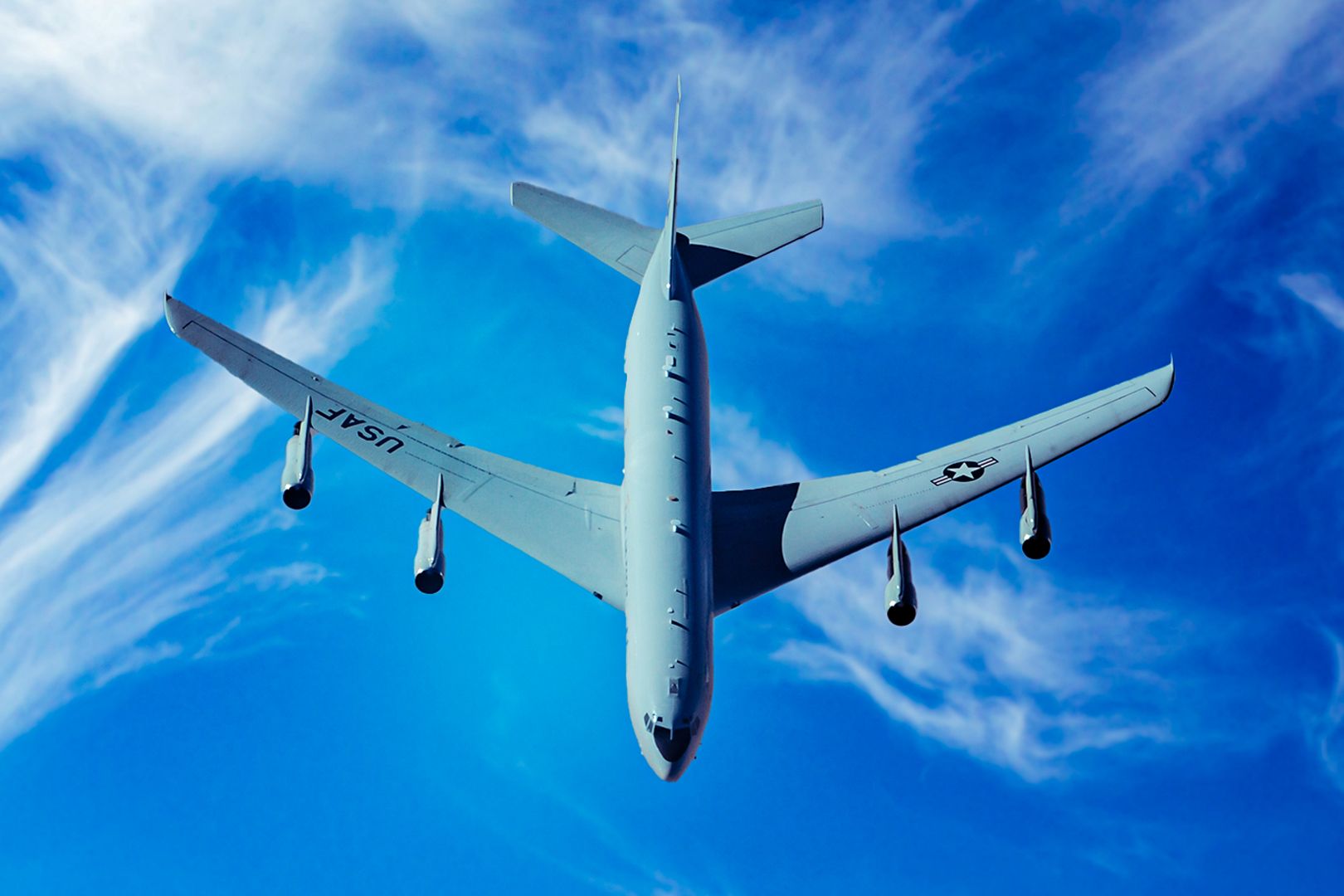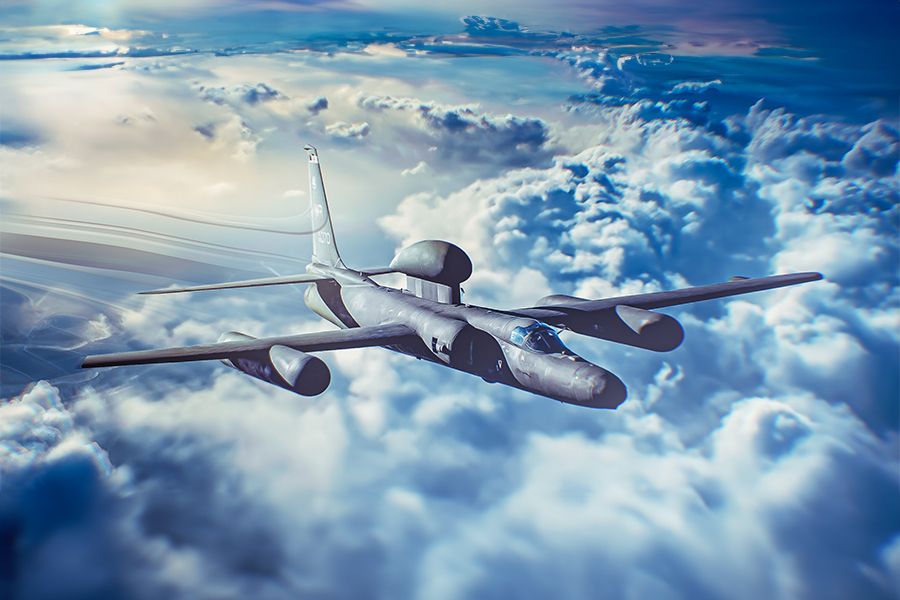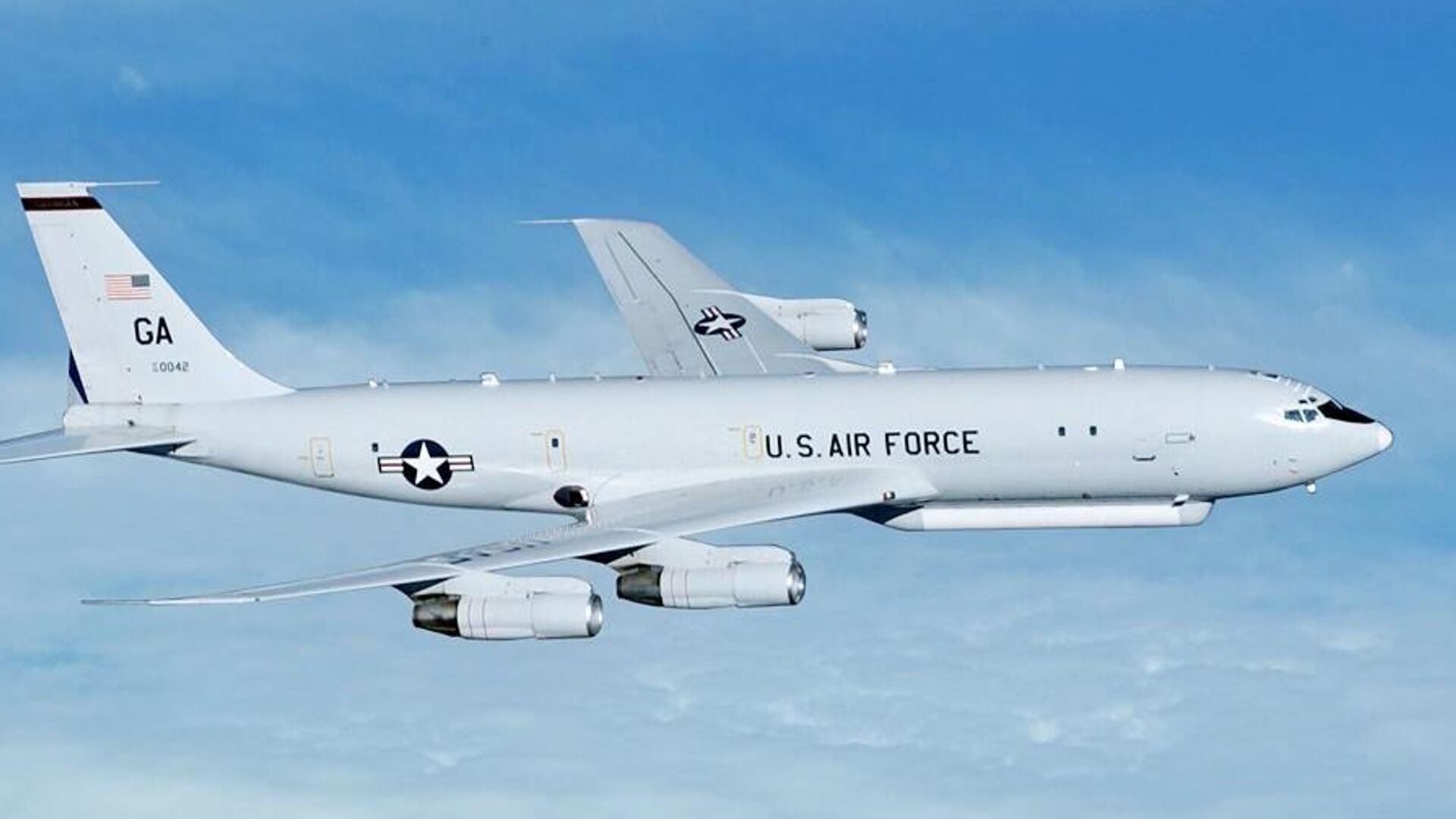Summary
- E-8C JSTARS provided detailed battlefield info to US military via special radar, aiding intelligence and real-time monitoring.
- Retirement prompts specialized sensor networks to replace spy aircraft, such as GMTI and SBR technology.
- Complex and costly successor program was ditched, leading to emphasis on sensor networks for ISR missions.
The Northrop Grumman E-8 Joint Surveillance Target Attack Radar System (Joint STARS) was a command and control aircraft operated by the United States Air Force (USAF) between 1991 and 2023. The airborne ground surveillance and battle management platform was based on the Boeing 707-300 commercial airframe.
The E-8C used specialized radar, communications, and control systems to track aircraft and ground vehicles, and collect imagery. The USAF tactical data is transmitted to ground and air control commands for strategic surveillance and intelligence.
On November 15, 2023, the E-8C JSTARS flew for the last time for the USAF. With the retirement of the essential intelligence platform, the question arises: what will replace the E-8C JSTARS? While the USAF was initially considering a successor platform to fill the gap, it was later decided that a specialized network of radars, satellites, and sensors would do the job instead of an aircraft.
What was the E-8C JSTARS used for?
Two units operated the JSTARS from Robins Air Force Base
- Active duty 461st Air Control Wing
- Georgia Air National Guard’s 116th ACW
The E-8C JSTARS is equipped with specialized radar and communication systems that enable the retrieval of images and data for intelligence. The aircraft has a prominent canoe-shaped radome under the forward fuselage carrying an airborne radar antenna. According to the Air Force,
“The radar and computer subsystems on the E-8C can gather and display detailed battlefield information on ground forces. The information is relayed in near-real time to the Army and Marine Corps common ground stations and to other ground command, control, communications, computers and intelligence, or C4I, nodes.”
- Crew: Four flight crew (pilot, co-pilot, navigator, flight engineer)
- Capacity: 18 specialists (crew size varies according to mission)
- Length: 152 ft 11 in (46.61 m)
- Wingspan: 145 ft 9 in (44.42 m)
- Height: 42 ft 6 in (12.95 m)
- Empty weight: 171,000 lb (77,564 kg)
- Max takeoff weight: 336,000 lb (152,407 kg)
- Powerplant: 4 × Pratt & Whitney JT8D-219 low-bypass turbofan engines, 21,200 lbf (94 kN) thrust each

Related
The Ultimate Guide To E-8C JSTARS: Joint Surveillance Target Attack Radar System
JSTARS has been faithfully serving the US Air Force since 1991. So, what does the future hold for this remarkable plane & radar platform?
Three decades of missions
Apart from the USAF, the US Air National Guard operated the type to provide invaluable intelligence that guided strategic decisions. The APY-7 active electronically scanned array airborne radar antenna can precisely identify fixed and moving targets. The subsystems include:
- Heavy electronic countermeasures
- Ground moving target indicator (GMTI)
- Fixed target indicator (FTI)
- Synthetic aperture radar (SAR)
- Doppler radar
The Air Force states,
“The antenna can be tilted to either side of the aircraft where it can develop a 120-degree field of view covering nearly 19,305 square miles (50,000 square kilometers) and is capable of detecting targets at more than 250 kilometers (more than 820,000 feet). The radar also has some limited capability to detect helicopters, rotating antennas and low, slow-moving fixed wing aircraft.”
The E-8C could support a wide range of roles within the US military. From active missions in war zones to reconnaissance and peacekeeping, the E-8C played a crucial role for over thirty years. The replacement is expected to not only fill the void but also exceed in intelligence missions.
The replacement systems
Before the Air Force began retiring its fleet of E-8C JSTARS aircraft in February 2022, it briefly launched an effort to develop another flying platform. However, the program was abandoned largely because it was too complex to execute and too costly to run.
The GMTI-based aircraft programs used in ISR missions are difficult to run and cost a lot. The Air Force aims to use specialized networks of sensors, radars, and control subsystems to replace the JSTARS. The Air Force said in a statement, as captured by AirForce Times,
“We continue to operate multiple ISR platforms with GMTI capability and plan to do so across the duration of the coverage reduction caused by JSTARS retirement.”
Dynamic GMTI radars can replace the JSTARS by collecting and providing the same level of information while allowing periodic updates and precise tracking of moving targets. The Advanced Battle Management System (ABMS) aids the integration of various sensors to obtain time-sensitive information.
The US Space Force is working closely with the National Reconnaissance Office (NRO) to develop a Space Based Radar (SBR) to provide better coverage for GMTI operations. The Air Force Times reveals that the USAF has kept the SBR and JSTARS replacement information highly classified.

Related
Invisible Weapon: How The Lockheed U-2 Was Designed For High-Altitude Reconnaissance
The aircraft remains in service today.


